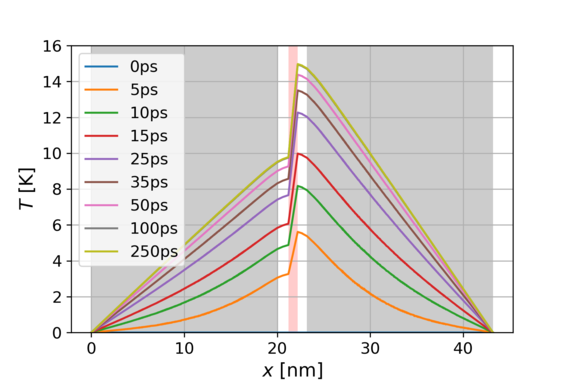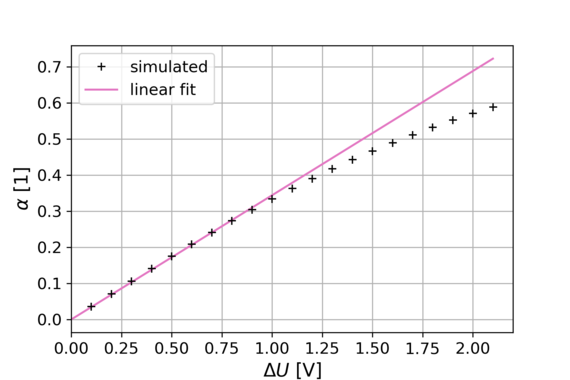 |
|
||||
BiographyTomáš was born in Opava, Czech Republic, in 1992. He received his Bachelor degree in Mechatronics from Brno University of Technology in 2015. After an exchange year at the Norwegian University of Science and Technology, Norway, he enrolled in a Master program therein, receiving his Master's degree (MSc) in Physics in November 2018. In addition to his expertise in condensed-matter physics, Tomáš has previous experience working in the fields of numerical acoustics and robotics. Tomáš joined the Institute for Microelectronics am in July 2020, where he is working towards his doctoral degree in micromagnetic simulations for non-volatile magnetic memory devices. |
|||||
Heat Modeling in Magnetoresistive Random Access Memories
Ongoing miniaturization has been pushing complementary metal-oxide-semiconductor (CMOS) memory technology to its limits. Due to an increase in the leakage currents for decreased transistor and contact sizes, the dynamic and stand-by power increases. The introduction of intrinsically non-volatile magnetoresistive random access memory (MRAM) can ameliorate this problem. MRAM possesses endurance and speed much higher than those of current flash memories, operates in a broad temperature range and is fully compatible with CMOS technology.
In a magnetic tunnel junction (MTJ), the basic building block of MRAM, additional heat is produced during the writing process due to the high currents passing through the structure. While the switching of the free-layer is facilitated by the increased temperature, the stability of the memory cell is decreased. In order to reduce the probability of random data erase after the writing process, the temperature of the free-layer has to be relaxed fast.
There are two main heat sources identified in MRAM cells. In the ferromagnetic materials (FM) and normal metals (NM) with resistivity ρ, the passing current density j produces a power density q(r)=j2ρ. The second source is associated with hot-electron/hole heating. When the electron tunnels through the oxide barrier from the source FM, it arrives as a hot electron to the receiving FM, and its excess energy is dissipated through inelastic scattering processes in the vicinity of the FM/oxide interface. Similarly, the hot hole left in the source FM is filled by available electrons, and heat is produced. Due to a higher probability of electrons with the energy close to the Fermi energy of the source FM to tunnel, the heating due to hot electrons/holes is asymmetric. The total hot-electron/hole heating power P can be written as a sum of a source and a receiver FM power, Ps and Pr, respectively. These can further be expressed in terms of P and by using an asymmetry parameter α: Ps=(1-α)P/2 and Pr=(1+α)P/2.
We consider a CoFeB/MgO/CoFeB MTJ connected to NM contacts. Fig. 1 shows the temperature profile of such a structure for α=0.3. For constant current density, the temperature of the receiving FM reaches higher values and saturates after 100 ps. Similarly, the temperature relaxes to ambient temperature after 100 ps (not shown). Fig 2. shows the results of an α calculation based on a simple quantum mechanical model. The FM layers are considered to be a perfect electron gas. The tunneling probability of electrons is calculated by solving the Schrödinger equation for a 1 nm thick trapezoidal barrier. Asymmetry in α increases linearly with the increasing potential drop across the barrier ΔU and slowly saturates for higher values of ΔU.

Fig. 1: Heating of an MRAM cell based on a CoFeB (1.2 nm)/MgO (1 nm)/CoFeB (1 nm) MTJ connected to NM contacts (20 nm). The temperature of the structure saturates after 100 ps. Due to an asymmetry of the hot-electron/hole heating, the temperature profile is also asymmetric. Simulated for α=0.3, constant current density in the negative x direction and 1 V applied between the contacts.

Fig. 2: Calculated asymmetry for different ΔU for a trapezoidal barrier with a height of 4.8 eV and thickness of 1 nm.


